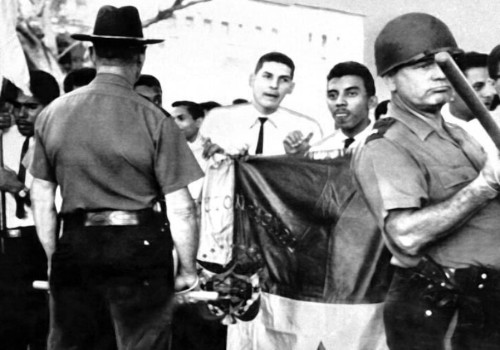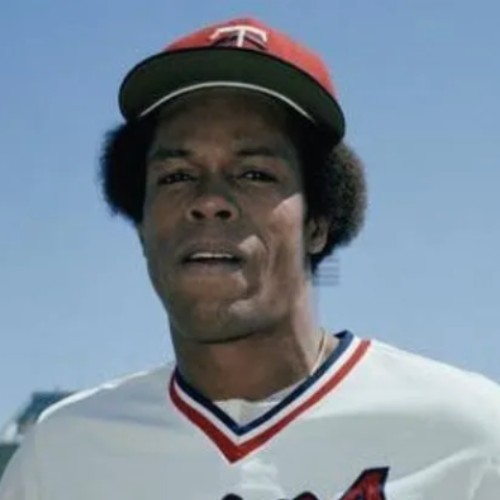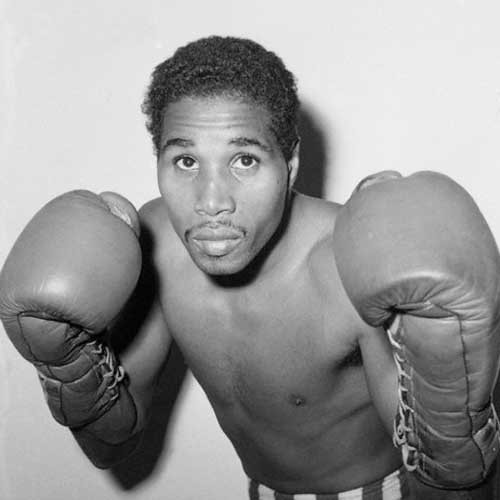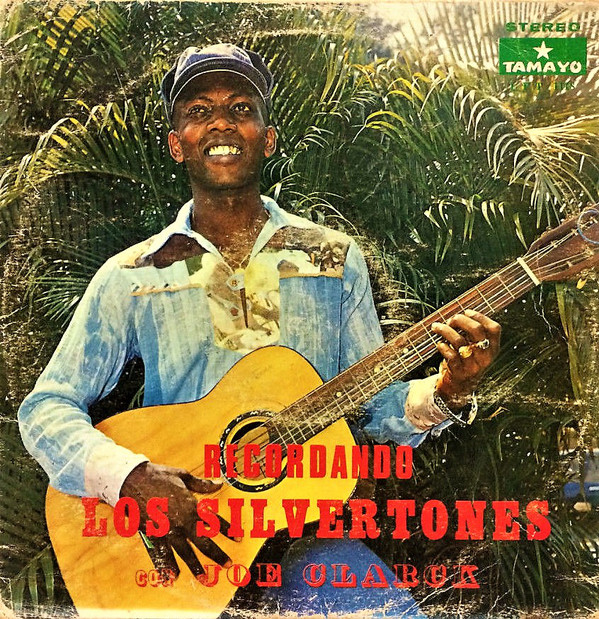This piece was originally written last year for a friend‘s project that never materialized. It‘s a brief literary adventure that explores just a part of Panamanian music in the “Combos Nacionales“ era. There are some great recommendations and links at the bottom. Hope you enjoy it!
The Context
The sixties in Panama were marked by political turmoil and a strong libertarian mindset in the younger generations of war and post-war babies. Society was changing rapidly. The country found itself in the middle of a nationalist fight against the authorities of the Panama Canal Zone: the 900 square mile stretch of land governed by the United States of America up until 1979. The martyrs of 1964, twenty-two or so students of the “Instituto Nacional“ who were gunned down by Canal Zone military police for trying to erect the Panamanian flag in “their“ territory, fueled an already strong sense of pride in the nation. Unity was stronger than ever.


Let’s Be Famous
There were also many positive moments shaping the mindset of the Panamanian artist towards the dawn of the seventies. More importantly, the massive international recognition of star champion boxers Roberto Duran, and Ismael Laguna before him coupled with Rod Carew’s huge success in the major leagues. You might think well why are the artists’ mindset shaped by figures of sport? It‘s simple, Panamanians wanted to be famous! They knew it was possible and music was going to be their route.


War baby musicians like Joe Clarke (Los Silvertones), Ernie & Edgar King (Fabulosos Festivals), Carlos Brown & Ray Adams (The Exciters), and Eduardito Ruiz (from Los Superiores who went to the same Instituto Nacional as the martyrs) like many other teenagers, knew they had a chance to achieve stardom through music. Listening to the radio and vinyl recordings, they started the “Combos Nacionales“ phenomenon by learning guarachas in Spanish at the same time they played rhythm and blues in English and calypsos in “patois“ or whatever Caribbean dialect they knew. Some educated themselves in jazz idioms too, inspired by the success of fellow Panamanians like Mauricio Smith and Carlos Garnett who at this point was a steady member of Art Blakeys “Jazz Messengers“ and was about to go on to play with Miles Davis.

These young Panamanian musicians were feeding off all sorts of different styles of music they got their hands on. Armed with electric guitars & pianos, wah wah & distortion pedals, brass instruments, and a whole lot of feeling, they embarked on one of the most original and historical musical fusions ever produced. Back then, musicians had the best of the best sources of inspiration performing in the isthmus with Latin artists as Beny Moré, Tito Puente, Arsenio Rodriguez, Tito Rodriguez, and later on Fania Records artists being regular visitors, as well as culturally significant performances by James Brown and jazz legend and Blue Note Records regular Stanley Turrentine.
Panama was a place for partying. Live music was required in dozens of establishments daily in every city and town. Everyone was having a good time, and the “Combos Nacionales“ had gigs all over the country. Some went on to achieve great fame, not only locally, but in the region. The music produced during this era, the late sixties to mid-seventies, is of outstanding diversity and lies as a testament of days when Panama sounded like the place to be. Here are some recommendations:
1. Los Silvertones (RCA, LP) –
This magnificent LP on RCA records is full of surprises. There is definitely some Panamanian versatility going on with the dancefloor anthem “Candela Brava“ alongside some dark soul (“No Te Vayas de Mi“) and banging James Brown-Esque funk in the form of “Cycle Rider“. The sound of the double alto saxophone style used by composer Ricardo Bermudez is ever-present. Disfruta …
2. Exciters Potpourri (Panavox, LP) –
The final LP that this group released has some of their best material. An incredible mix (or “potpourri“) of cover songs interpreted with the unique feeling of The Exciters. These include versions of “Track of My Tears“ by Smokey Robinson and the Miracles, and the 8 minute plus epic cover of “K – Jee“ by the Nightlighters, which I present to you.
3. Fabulosos Festivals – Come on and Do It / At Last, I’ve Found My Love (Taboga Records, 45rpm) –
This highly coveted 45rpm single displays the sweet soul capabilities of the King brothers in the original composition “At Last, I’ve Found My Love“. On the flip, we got “Come On And Do It“ showcasing some hard funk that cuts through your speakers in the almighty James Brown manner. Enjoy this beautiful soul ballad composed by these amazing guys from Colón.
4. Los Superiores – Voy a Llorar /Oye Cariñito (Loyola Records, 45rpm ) –
The Beatles changed the musical ball game for many reasons, but I bet they never ever thought a band of teenagers from the streets of Panama would do an interpretation of their song “Don’t Let Me Down“ with such deep feeling that rivaled their own, which is exactly what “Los Nenes Psicodelicos“ did with “Voy a Llorar“. “Oye Cariñito“ on the B side is just a further testament to the sweet soul masterminds Eduardito Ruiz and his combo were. Listen to that heavy Beatles stuff I mentioned.
Este escrito lo hice el año pasado (2019) para un proyecto de un amigo que nunca salió, pues entonces para que se quede en mi disco duro mejor se los comparto. Disculpen que lo tengo en inglés, prometo traducirlo pronto.